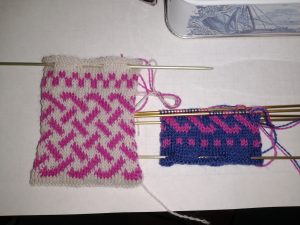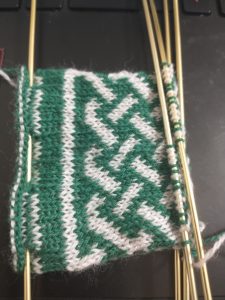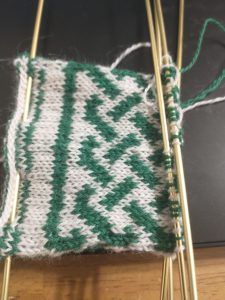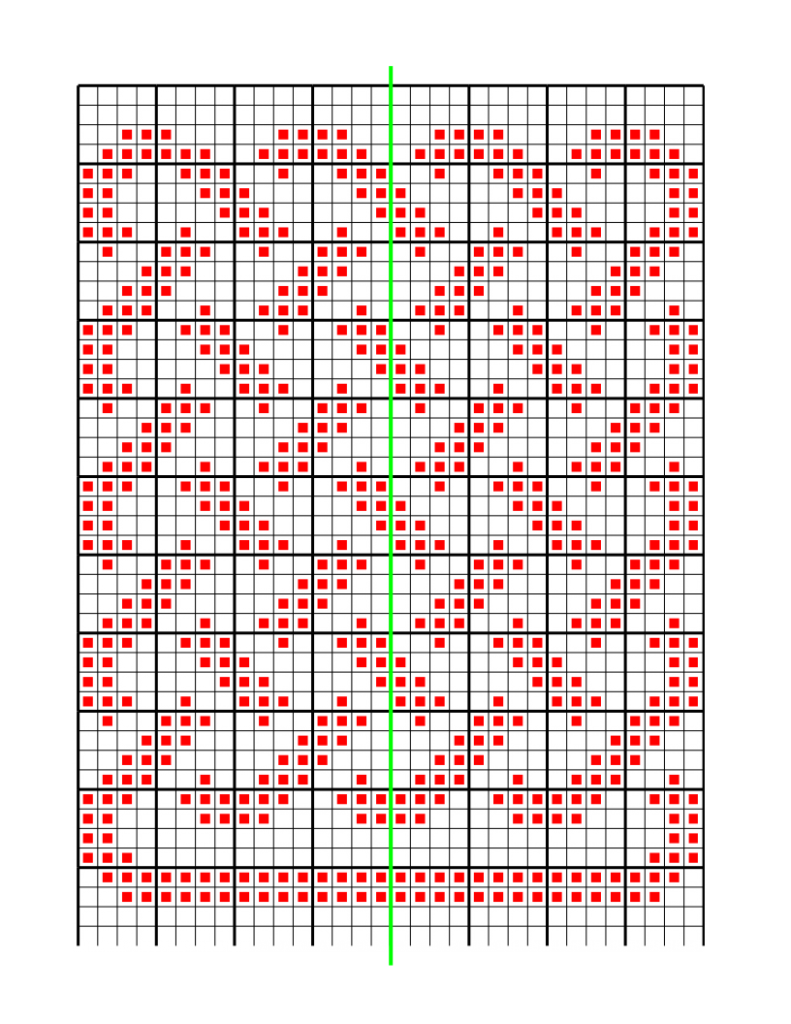So lately I’ve been on a kick knitting little pouches in 2 colours. The pouches are usually 64 stitches in the round, knitted with 5 needles, so each needle (except the active one) has 16 stitches on it. They’re small enough that they knit up quickly and I can play with patterns. The last few pouches, I’ve been playing with interlaced patterns. These pouches are all knitted with 2/18 merino wool, on size 0 needles and are large enough to hold some coins, or a medallion, or some such.
Based on medieval (but much larger) pouches, they’re knitted top down, with holes near the top edge for the eventual drawstring, and finished on the bottom with a 3 needle bindoff. Basically, transfer the stitches onto 2 needles in parallel, and then on each stitch go through a stitch from each needle together. This sounds more awkward than it should.
While I think about it, the holes are made by knitting together, on each of the four needles, stitches 3&4, 5&6, 11&12, and 13&14. Then on the next row after the 3rd and 9th stitches, add 2 stitches back in using yarnovers.

First Attempt 
Second Attempt 
Doublesided 
Still Doublesided
So the red and grey was my first attempt at interlacing. While technically interlaced, the diagonal bars were two close together so you can’t really see what’s going on.
After that I started playing with the magenta, which worked better. What you can’t see in these pouches of course is the crossing point at one edge where everything looks just a little wonky because you’re knitting in the round.
Which brought me to the current attempt in green and vanilla, where the two sides of the pouch are mirror images. That way the pattern extends exactly to the edge, but no further.

The pattern here is for one side of the pouch – 2 needles wide. The light green line marks the boundary between the two needles.